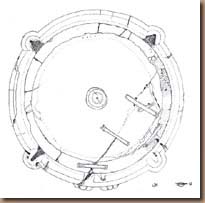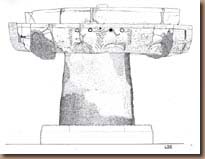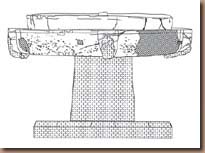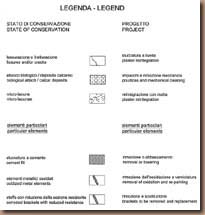THE FOUNTAIN IN THE GARDEN (THE CANTHARUS)
Historical and figurative context
The fountain standing in the center of the garden was erected by Antonio Muñoz in 1913. In it he re-utilized two marble bowls positioned on a portion of fluted column, which he had found in the monastery garden inserted into a circular fountain that still exists today. The two bowls, one inside the other, the lower one adorned with leonine protomes and mascarons, were originally part of a cantharus of unknown origin, which has been controversially dated by experts from the 9th or 12th century. In any case they represent the most ancient Roman remains of a fountain of post-Classical age known today.
Muñoz placed the two bowls with the column below in the center of a square-shaped basin with re-entering corners and a perimeter edged in peperino. Beneath the column he placed a base with protective leaves imitating the bases of the coupled columns of the cloister.
In the 1914 photographs the supporting column appears at the height that it had formerly been in the monastery garden. Later, perhaps during the 1914-1916 restoration works, Muñoz had it lowered, probably judging it to be too much of a visual obstacle.
In the photographs prior to its dismantling and re-erection in the cloister, the bowls already showed substantial signs of deterioration and metal pins had been inserted into them. Muñoz added new copper pins and made extensive repairs in cement.
The fountain has by now become an integral part of the cloister, thanks to its charming location and balanced proportions, and is one of the elements that makes the cloister particularly attractive to visitors.
 |
|
Fig. 1 - View of the cantharus (detail). |



